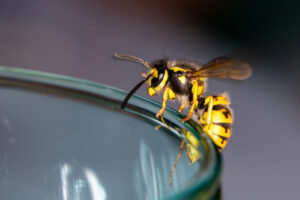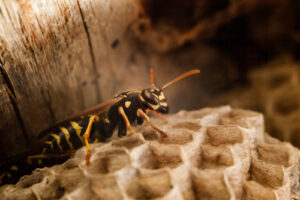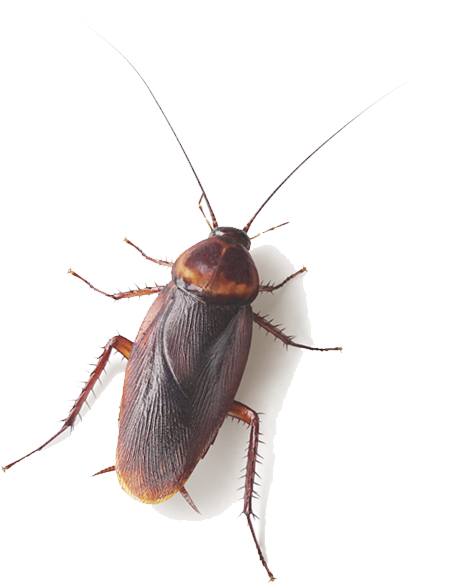How To Get Rid Of Wasps & Wasps Nests
What’s one word that can single-handedly ruin a picnic, or a relaxing afternoon in the garden?
‘Wasp!’
They drive us crazy, they make us do a strange blend of jiu-jitsu combat and funky dance moves to swat them away that we know won’t work but we do it anyway, and they’re capable of delivering a powerfully nasty sting.
How To Get Rid Of Wasps & Wasp Hives
In this blog, we’re going to fuel you with some key tips and tricks for how to get rid of wasps – and how to get rid of wasps nests/hives – from your home and garden. Seeing one or two shouldn’t always be cause for concern, especially in the summer months, but it’s worth having an expert in to assess whether your home has become prey to a nest, or the wasp you’ve spotted is a queen looking for a place to build her home.
Without further ado, here are 8 things you can do to deter and get rid of wasps before it’s time to call in the professionals for a thorough inspection of your home… and potentially a nest removal.
Our top tips for how to get rid of wasps from your home are:
- Remove Sources Of Food
- Household Vinegar
- Make An Essential Oil Blend
- Fill In Wall Cracks
- Soapy Water
- Keep Your Vegetation Trimmed (& Wasp Resistant)
- Set Outside Wasp Traps
- Seek Professional Wasp Nest Removal
1. Remove Sources Of Food
Compost bins, trash cans, dog food bowls and allotment plants are all fair game for a hungry wasp. Cover your plants and compost areas with impenetrable sheets and ensure the lids to your rubbish areas are tightly sealed and weighted down if necessary. Wasps can get inside most containers, so keep all your food and drink inside.
2. Household Vinegar
Vinegar is the household gift that keeps on giving. The acetic acid in vinegar will kill wasps, and you can make a simple solution of diluted vinegar in a deep bowl, with sugar to attract them. They’ll drown in the liquid, and your vinegar mix will hopefully keep any more from coming into your home. It’s best to leave these home traps in your garden to avoid the unpleasant scent.
3. Make An Essential Oil Blend
Just like when dealing with other common household pests, such as getting rid of rats and mice from your home, there are certain scents that wasps do not like. Scientific experiments have shown that lemongrass, clove, rosemary and geranium are a powerful blend that successfully keeps wasps at bay (whilst making your home smell lovely!).
Mix these essential oils with water and wipe the solution over high-risk areas of your home, such as cracks, door frames, and locations of previous nests. Peppermint oil also works and you can follow the same process or buy specially manufactured wasp-repellent peppermint sprays.
4. Fill In Wall Cracks
Wasps will sneak into your home in even the tiniest of gaps. Whether it’s a space between your wall sidings, a decay in the double glazing, or small holes at the corners of your windows, a wasp will find its way in. Patch up the holes and fill in the cracks with expandable sealant, or call a decorator for a thorough service if it’s more than just the odd hole around your home. Do this during the autumn and winter months before the worker wasps become active again.
5. Soapy Water
If you’re wondering how to get rid of wasps, a soapy water mix is a simple household solution that will take out a decent number. If you’ve located a small, outdoor nest, the soap solution will block the breathable space and prevent clear air from getting in, killing the insects inside. Dispense it from a spray bottle so you don’t have to touch the nest, and then move away – as the deaths will send chemical signals for other wasps to defend their home. You don’t want to be around for that!
6. Keep Your Vegetation Trimmed (& Wasp Resistant)
There are some plants that wasps will keep away from altogether, so if you can fill your garden with those, you’ll have less to contend with in the first place. Mint, eucalyptus and citronella are plants that will not only be left alone but actively repel wasps. You can find lists of other wasp-resistant plants online. For the rest, keep your shrubs, trees and bushes trimmed, as wasps are more likely to build an outside nest in overgrown vegetation where they’re less exposed.
7. Set Wasp Traps Outside
Make them yourself or buy them in hardware stores and garden centres. Wasp traps are simple and effective. They lure in the critters with a sugary, sticky solution via a narrow entrance they can’t fly out of. The wasps get stuck in the liquid and can’t get out again. During the summer they’ll keep the odd wasp from interfering with your barbeque, but they can’t tackle an entire nest.
Check out this YouTube video that demonstrates an easy and effective wasp trap alternative:
8. Seek Professional Wasp Nest Removal
If you’ve tried all these steps and you’re still seeing wasps in your garden, or making their way into your home, more than likely you have a wasps’ nest lurking somewhere in your wall cavities, attic or garage. Not to worry, you’re one of many Melbourne homes that have to deal with wasps – and their stings! As trained experts, we know how to get rid of wasp nests of all sizes without hassle. So before your wasp problem becomes an infestation, seek expert help, and get the nest professionally removed.
Final Words
To summarise, there are some steps you can take to prevent wasps from invading your home and to know how to get rid of wasps’ nests. Unfortunately, the bottom line is that the wasps keep coming back. They’ll defend their nest (and stay on your turf) until it’s removed. Don’t put off calling in the experts, so we can get rid of your buzzing irritations efficiently and professionally.
Pestline is on hand to take care of all your problems with common petulant pests. Get in touch at 1300 361 646, or send us an email to tell us your concerns, and we’ll organise a no-obligation, free quote to help you get started on removing the issue.
It’s not just wasps we take care of. If you’re struggling with other household pests, discover our articles with tips on removing the insects and animals causing a nuisance in your home.
Want to know how to get rid of other bugs out of your home? Check out our other blogs:




